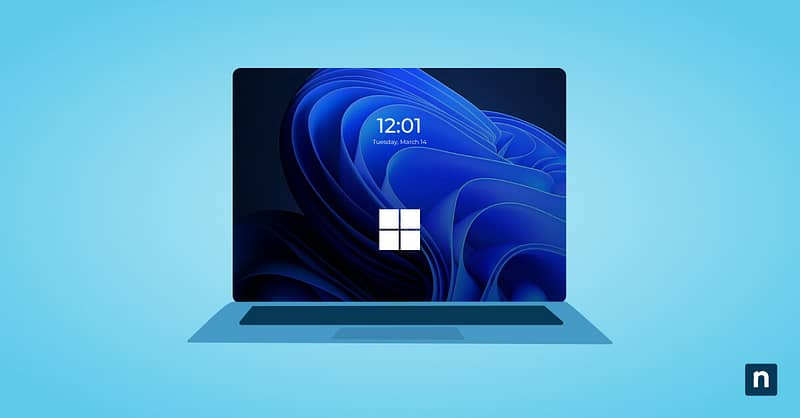As an accessibility tool, the mouse ClickLock is very useful for people with limited dexterity or mobility issues. It’s also valuable for individuals who have trouble using the touchpad or the mouse with its default settings. However, it’s important to know how to configure this feature to cater to a person’s needs and preferences.
Additionally, your organization’s device specifications and requirements may not require the mouse ClickLock feature. Enabling or disabling ClickLock in Windows 10 is a straightforward process that only involves a few steps using the Mouse Properties tool. This article is a comprehensive guide on how you can accomplish that:
What is ClickLock on a mouse?
ClickLock is a Windows accessibility feature that allows users to lock the mouse click and enable the dragging feature after only pressing it briefly. This is especially useful for users who have trouble maintaining prolonged pressure or those who have dexterity and mobility issues with their hands and fingers.
Requirements to toggle mouse ClickLock
- Windows version: This guide is applicable to any version of Windows 10.
- Pointing device: A connected and functioning mouse or pointing device.
- Administrator rights: If you’re making the change for all users on a device, you should have administrator rights.
A step-by-step guide on configuring the mouse ClickLock settings
Method 1 (via Mouse Properties)
The ClickLock feature can be turned on or off through the Mouse Properties window. Here’s how:
- Press Win+R, type main.cpl, and click OK. This will open the Mouse Properties window.
- Go to the Buttons tab.
- Under the ClickLock section, you can do either of the following:
- Check the Turn on ClickLock option to turn the feature ON.
- Uncheck the Turn on ClickLock option to turn the feature OFF.
- Click Apply > OK.
The mouse ClickLock changes you made should apply now.
Method 2 (via Settings)
You can also access the Mouse Properties window through Settings. Here’s the step-by-step guide:
- Open the Start Menu > Settings > Devices > Mouse.
- Click Additional Mouse Settings to open the Mouse Properties window.
- Go to the Buttons tab.
- Under the ClickLock section, you can do either of the following:
- Check the Turn on ClickLock option to turn the feature ON.
- Uncheck the Turn on ClickLock option to turn the feature OFF.
- Click Apply > OK.
The mouse ClickLock changes you made should apply now.
Notes for different IT environments
ClickLock is generally a user-specific setting, which means that changing this setting will not carry over to every user account in a shared device. For shared devices, you might want to make the change for all users on the same device. You can use the Registry Editor which will give you a greater degree of control over the ClickLock feature.
Note: If you are going to use the Registry Editor to manage the ClickLock settings, make sure you make a backup before proceeding. This will give you a savepoint to go back to if you encounter unintended results.
- Press Win+R, and type regedit > OK. This will open the Registry Editor.
- Navigate to this address: HKEY_CURRENT_USER\Control Panel\Desktop
- Find ClickLockTime and double-click it.
- If ClickLockTime isn’t there, you have to create it yourself.
- Right-click on the Desktop key > New > DWORD (32-bit) Value.
- Change the name to ClickLockTime.
- Set the value to a number between 200-2200 milliseconds, depending on how long you want to hold the mouse button before it locks.
- Press OK.
- Restart the computer so the changes take effect.
Why disable ClickLock?
While ClickLock is an incredibly useful accessibility feature, some people may want to turn it off. This is to prevent themselves and other users from accidentally dragging and dropping files in the wrong place. Turning ClickLock off can also standardize input behavior across managed systems, giving IT administrators greater control over the devices they manage.
Troubleshooting scenarios for toggling the mouse ClickLock
The ClickLock option is greyed out
Make sure that all your mouse drivers are up to date. Here’s how:
- Press Win+X.
- Select Device Manager > Mice and other pointing devices.
- Double-click on your mouse, then go to the Driver tab.
- Select Update Driver.
The setting doesn’t persist after reboot
Check if there are any group policies that are restricting this setting.
User reports that unintentional dragging continues
It may have something to do with other input and accessibility features, such as touchpad gestures or sticky keys. Verify that they’re also not interfering with your usage.
Final thoughts on configuring the mouse’s ClickLock settings
The ClickLock feature is an important accessibility tool for many. It’s a big help for people with limited dexterity and mobility issues or those who have trouble using the default mouse features. However, some people find it easier to modify the ClickLock settings or just have it turned off completely. The mouse ClickLock setting can be managed through the Mouse Properties window. Now, since this is a user-specific setting, you should use the Registry Editor if you want to make system-wide changes.
Whatever the case, understanding the feature and being able to control the mouse ClickLock feature is important for IT administrators and professionals working in large organizations, enterprises, or multi-user environments. These skills can help you maintain consistent input behavior across the different devices you manage.








